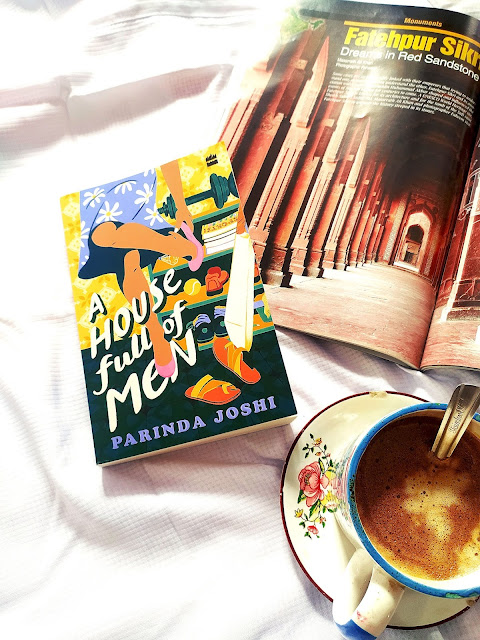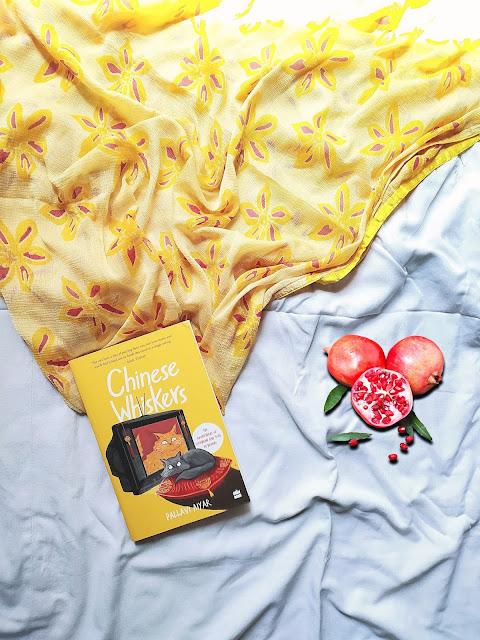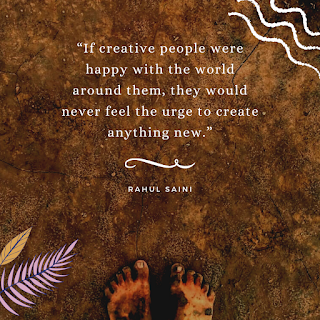Semicolon, an intricate, beautiful tattoo created by Mohit; is inked with stream-of-consciousness; effectively capturing the mental turmoil of those dealing with traumatic past
Book Review by Dhiraj Sindhi

|
| Semicolon: a novel by Mohit Narbada Joshi |
Author: Mohit Narbada Joshi
ISBN: 978-9390909810
Genre: Contemporary Philosophical Fiction
Length: 288 Pages
Publisher: Kalamos Literary Services LLP
Cover Designer: Rishikumar Thakur | Instagram: @bookcoversbyrishi
Order your copy right now: https://amzn.to/3CFkSEV
Mohit Narbada Joshi is a PhD Scholar in the department of Humanities and Social Sciences at Malaviya National Institute of Technology, Jaipur. Graduated as an engineer, and post graduated in English Literature, he could no longer ignore his calling. He has been writing since middle school, and this would be his first published fiction work. He has also worked as an Assistant Professor of English with St. Xavier’s College, Jaipur. One can find his writing page on Instagram: @harsh_writes where he shares his short poems and musings.

|
| Mohit Narbada Joshi |
Instagram: @harsh_writes
Disclaimer: This review is only intended for initiating discussions. The opinions and views presented in this article are my own and do not reflect anything about the book's author.
Contrary to the apparent perspicuity of semicolon (punctuation), Mohit Narbada Joshi tattoos an intricate yet beautiful philosophical fiction—Semicolon using the ink of stream-of-consciousness in different experimental ways; effectively capturing the emotional turmoil one goes through while struggling with mental health issues stemming from a traumatic past; ‘fresh’ in all aspects, including romance, this debut from a promising author defies conventions of the most popular Indian contemporary works.
Semicolon follows two independent storylines, that of Keshav and Dhara. Keshav’s part of the story is narrated using interior monologues and Dhara’s, in first-person point of view. Keshav is troubled by this voice in his head that knows everything that is going to happen and everyone he is yet to meet in his life. These words at the beginning of the novel, ‘future is not something to be created, but just the past that needs to be revisited’ establishes the element of magic realism that is characterised by the mystery that somehow the protagonist knows what is coming next in his life and the next moment.
Dhara is utterly distressed that she is being forced to see a psychotherapist after she has lost (almost) all the people she had ever loved. She is afraid of the “anticipated” closure that she ‘would end up breaking all her ties with all that once mattered to her and detach her from the remains of a life she fell in love with.’ Being a medical student herself, she knows how this is going to play out if she complied with how she was expected to just. Let. Go. I think this is the thing about therapy and mental health that people need to understand that it is really difficult to let go of the past and how? Mohit has successfully illustrated this elaborately throughout the book in Dhara’s account. The journey starts by admitting that you may need or want closure, but that might never happen. In fact, one believes that holding onto the past is logically the best possible way to be secure; this sense of security convinces one to carry the burden of traumatic experience at the cost of being in a state of hopelessness. And ‘;’ is the very symbol of affirmation against this hopelessness.
Apart from being an addition to the semicolon movement, this book contains countless other metaphors. The philosophical writing style complements the interior monologues, which form the foundation of the book. The book is divided into three parts following the three-act structure, which is often used in works of narrative fiction. The first part is as usual, dedicated to the character development and problem definition. Here, you get to know what protagonists are dealing with and how do they perceive it.
In the second part, the story actually moves forward and so do the protagonists. Here, you come across many philosophical discussions and pieces of poetry while you are also being familiarized with more characters. Besides, the protagonists are undergoing the change of scene in their life for good. However, they’d have to confront their fears sooner or later and towards the end of the second part, they eventually find themselves on the path they dreaded for a long time. The structure of the book appears to be non-linear and readers may find it hard to connect the dots until the third part. In the final part, a proper climax takes place, which is absolutely mind-blowing considering how it resolves all the conflicts in the lives of protagonists. Readers are finally able to outline the actual sequence of the events and the mysteries are solved too.
It had been an emotional saga all along, although the climax had a pronounced effect on me. I could relate to both the protagonists on multiple levels which made me root for the characters till the end. Sometimes, I wasn’t able to keep up with the writing style, but I’m glad I put effort to understand the characters well. In the climax, it all did pay off. The most I resonated with was Dhara, I could literally see myself in her shoes. I will end this review with her words from the iconic climactic scene, which also made me cry, even the second time as I read it to quote “I was too scared of what lay beyond the answers to the questions I had grown comfortable with.”
Happy Reading!
Are you on Instagram and Goodreads? Let's connect!
























